A Unique Exhibit at Colonial Williamsburg
Collecting and Living with Treasured Southwestern American Art
For generations, anonymous Navajo women working on hand looms created brilliantly colored, boldly designed pictorial blankets and rugs as was their longstanding cultural and artistic tradition. They adapted and modified their weavings from the world around them and created an art form that is uniquely theirs and provides insight into the Navajo culture at the turn of the 19th century. Navajo Weavings: Tradition and Trade presents an exceptional opportunity to view 26 examples of these colorful and symbolic items on loan from the collection of American folk art enthusiasts Pat and Rex Lucke.
Below, discover the story of collectors Pat and Rex Lucke as they share their thoughts on what drives them as collectors.
What draws you to collect Folk Art?
Folk Art pieces seem to give us a historical connection to the people living where the item was produced. With many of the items, we don’t know the name of the artist, or who originally owned it, but we do know that the maker took pride in skillfully producing the piece, and that it was treasured by the owner. One can appreciate the craftsmanship that goes into making these pieces, along with the aesthetic appeal they have for us.
What led to your first purchase of a Navajo Weaving?
Seeing it hanging on the wall of a gallery in Arizona, it caught our eye. It is our Tree of Life weaving, which struck us at the time as something akin to a nice quilt, and a piece we would enjoy having.
When buying this item, the gallery owner gave us a copy of his book on Navajo Pictorial Weavings. Our interest in Navajo weavings went on from there. The more we learned about this art form, and the more weavings we saw, the more interested we became.
We had been collecting antiques and other decorative art items for quite a long time when we acquired our first weaving. As things usually go, we thought it would be a nice item to hang on our wall; then liked it so well that we started looking for more while trying to learn more about them. We spent a lot of time in museums, visiting shops and talking to knowledgeable people in the field, going to Indian Art Shows, and studying many books on the subject. We have done the same in building our collection of other Folk Art items. To this day, we travel quite a bit each year pursuing our interest in these things.
What are the parameters you take into consideration when looking at an item to add to your collection?
With our collections, we are at the point that we need to be particular when choosing pieces to add. We try to stick with buying things we know something about and items that will fit in with and compliment the other pieces in our collections. The first and foremost consideration when thinking about an item is; do we really like it and think we will enjoy looking at it for a long time. We try to avoid acquiring things just because we don’t have one of that type, or that it might be an important piece, or any other reason. If it doesn’t catch our eye right away, we probably shouldn’t buy it. Beyond that, the usual parameters of price, condition, age, size, etc. must be considered.
Is there any particular “holy grail” item you are in search of?
The simple answer is “not really.” The weavings we collect fall into two categories; 1) Classic Period Navajo Blankets, and 2) Historic Period Navajo Pictorial Weavings.
Classic Period Blankets are at the top end of Navajo Weavings. The better ones of these become available on rare occasions only. Pictorial Weavings are somewhat more available, but each one is so unique in its art form that you can only know you want it after you see it.
An appreciation for the great work done by these weavers, using the most primitive of tools, and under circumstances most of us would consider unbearable. They were truly very talented Artists. Navajo weavers continue to produce great work today.
What lessons have you learned as collectors, and is there any advice you might share with our readers?
First, make no mistake, I could prepare a list as long as my arm of “bad buys” made.
We see, quite often these days, advice given in numerous collector’s magazines on how to start out and go about collecting. It is usually sound advice, and I can’t add much to it. This advice contains statements such as:
- Buy books and study first, buy objects afterward
- Buy less, but better, and in the best condition
- Find good and trustworthy dealers to buy and learn from
- Buy what you want to own, not what someone else thinks you should have.
Some patience and discipline is required. An item you may want is out there, in good condition and at the right price. Wait it out, don’t settle for second best.
Other thoughts.
We consider it a privilege to be able to share our Navajo Pictorial Weavings collection with the public at the Museums of Colonial Williamsburg. The Abby Aldrich Rockefeller Folk Art Galleries have for a very long time been one of our favorite destinations to visit. We are confident that visitors will find this Navajo Weaving exhibit memorable, along with all the other great galleries and exhibits in the museum.
– Rex and Pat Lucke
For American Indian art aficionados, textile admirers, folk art enthusiasts and anyone who appreciates design and Navajo culture, Navajo Weavings is an exhibition not to be missed. Colonial Williamsburg and Art Museums tickets and additional information are available online at colonialwilliamsburg.com, by calling 855-296-6627 and by following Colonial Williamsburg on Facebook and @colonialwmsburg on Twitter and Instagram.
The Art Museums of Colonial Williamsburg include the Abby Aldrich Rockefeller Folk Art Museum and the DeWitt Wallace Decorative Arts Museum. The Abby Aldrich Rockefeller Folk Art Museum, celebrating its 60th anniversary in 2017, is home to the nation’s premier collection of American folk art, with more than 7,000 folk art objects made during the 18th, 19th and 20th centuries. The DeWitt Wallace Decorative Arts Museum exhibits the best in British and American fine and decorative arts from 1670-1840. The Colonial Williamsburg experience includes more than 500 restored or reconstructed buildings, historic trade shops, renowned museums of decorative arts and folk art, and extensive educational outreach programs for students and teachers. Visit colonialwilliamsburg.com




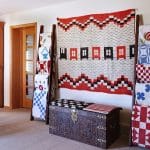


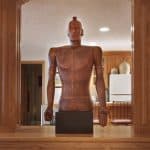
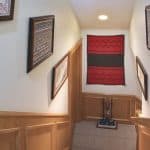
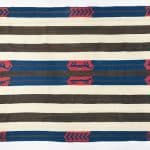

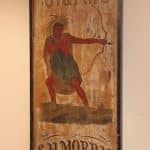
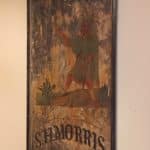
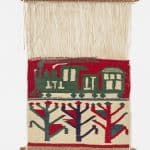
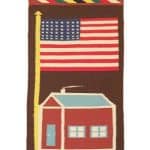

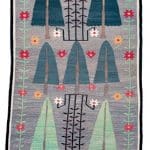




Related posts: